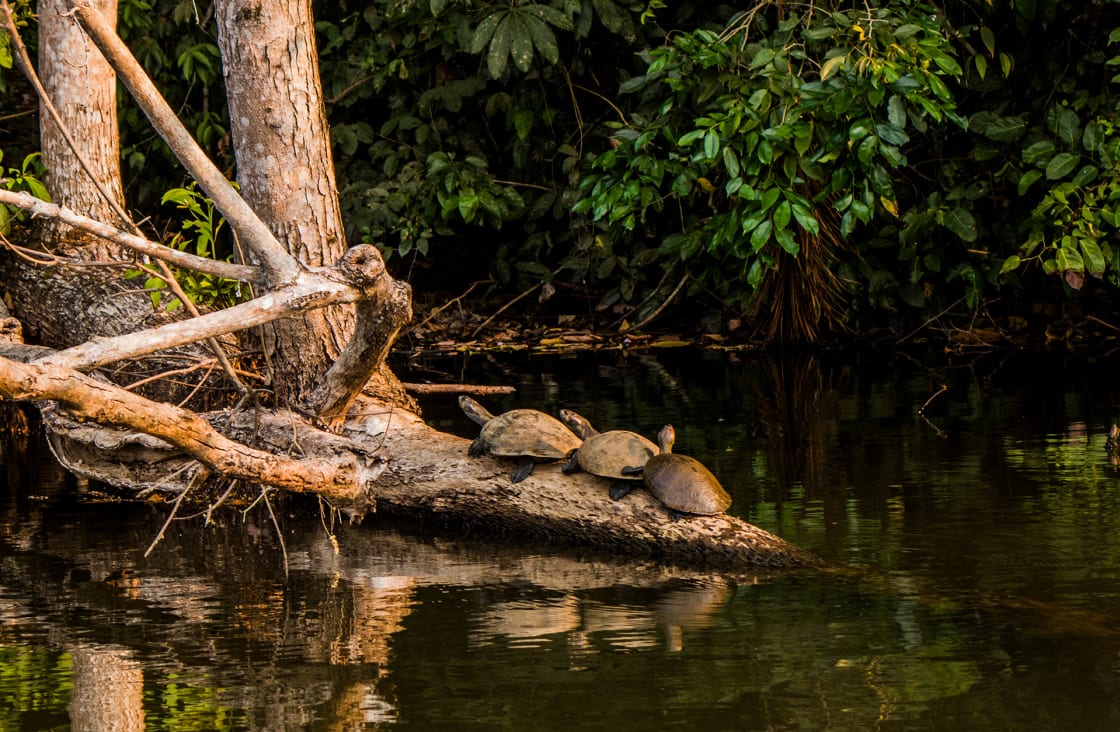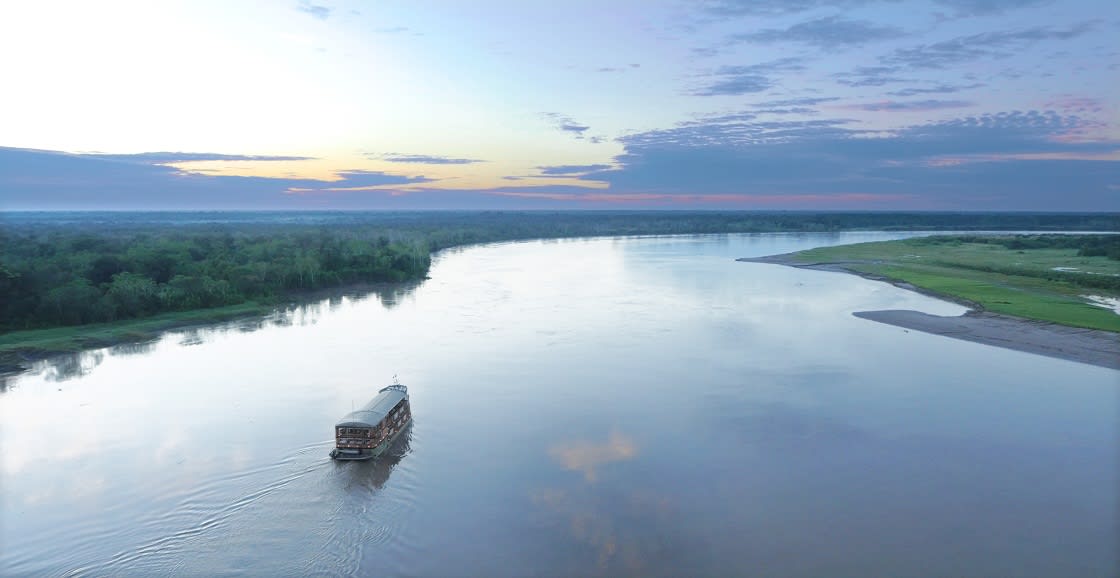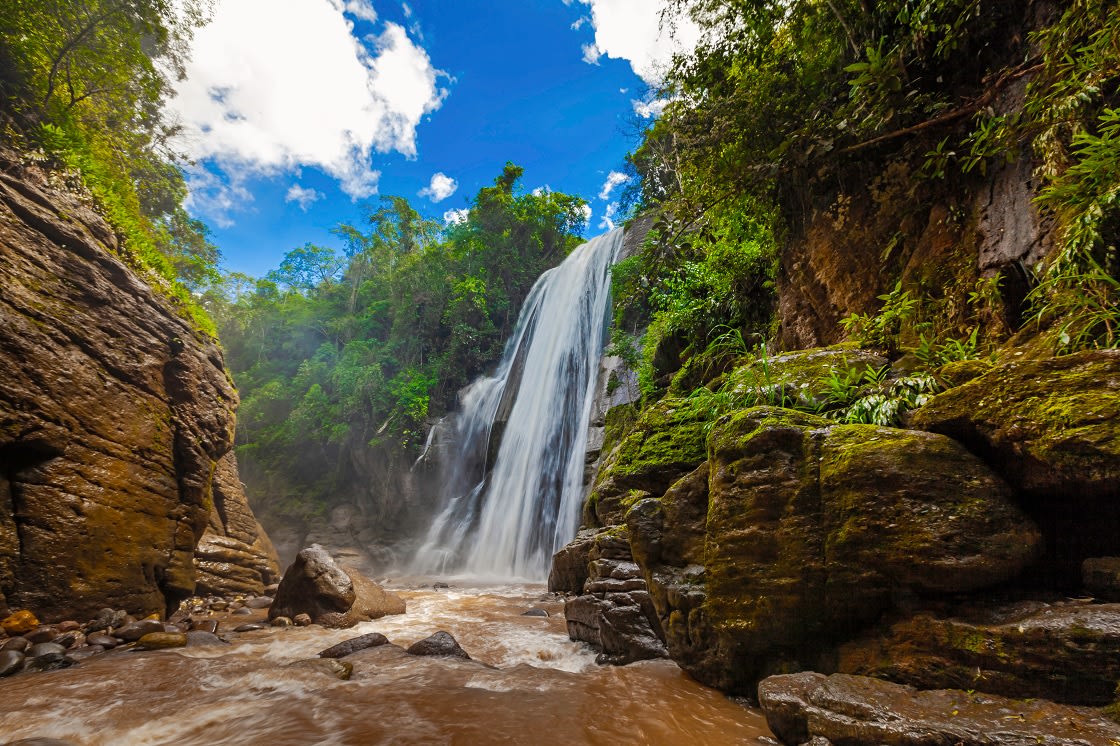
The Peruvian Amazon jungle is massive, so it’s difficult to know which area is the best place to visit. There are so many reasons to explore this living, breathing sanctuary of biodiversity and Peru is without a doubt one of the best places to do so. But the Peruvian Amazon makes up a vast 60% of the country’s surface area, and knowing where to start your Amazon vacation from is difficult.
Here we take a look at the various regions in the Peruvian Amazon you can visit, and the benefits of each. To simplify things, we’ve split the vast Amazon jungle in Peru into three general areas – the northern region, central region and southern region.

Delfin River Cruise In The Pacaya Samiria Reserve
This portion of Peruvian rainforest stretches from the footholds of the north Andean mountains to the borders of Ecuador, Colombia and Brazil. It’s the only region that actually features the true Amazon river, rather than just a tributary, so you might want to bear that in mind when making your decision.
The city of Iquitos in the northeastern Loreto region is the typical entry point for Amazon river cruises, jungle tours, and stays at the high standard jungle lodges in the northern region. Iquitos is the largest city in the world that is only accessible by boat or air – no roads lead to or from it! As it’s the most popular area to explore for visitors due to the density of forest and opportunity in the region, the tourist industry in the area is much slicker than elsewhere. It’s an excellent place to embark on a river cruise, and there are plenty of options, including our very own Rainforest Cruises.
As well as being an Amazonian launch-pad, Iquitos is also a destination in itself with tons of exciting activities and attractions. It is a loud and buzzing hub of activity, whose colorful streets flash glimpses of bygone times – a former glory founded on the exploitation of the rubber industry around the turn of the twentieth century. With the fascinating museums, authentic Belen market, manatee rescue center, peaceful cathedral and floating restaurants, you’ll be glad to allow for a couple of days here to explore.
From Iquitos it’s possible to visit the breathtaking Pacaya Samiria National Reserve, covering over two million hectares and pinned between the Marañon and Ucayali rivers. Low-lying and regularly flooded, it’s often nicknamed the ‘jungle of mirrors’ with stunning areas of still water that create unforgettable sunset scenes. Nature lovers will be in their element – spot the distinctive and unbelievable pink river dolphin, sharing the waters with yellow-spotted river turtles, twist-neck turtles, caimans and over 250 fish species, including the endangered sailfin catfish and paiche. Roaming the riverbanks, you might also catch sight of great white egrets, cocoa herons, snakebirds, jaguars, pumas, tapirs and even anacondas…

Veil Of The Bride Waterfall, Chanchamayo
The central region may not be the most visited but a small tourist industry is growing here. This is where you’ll find the beautiful Chanchamayo valley, the urban hubs of La Merced and Pucallpa, and numerous protected areas of forest surrounding them for exploration and birdwatching.
The Chanchamayo Valley is perfect if you want to dip into the jungle for a shorter excursion, being the most easily accessed rainforest area from the city of Lima. It is the coffee and citrus region, a gloriously verdant segment of forest stretching east from the foothills of the Andes. Known as the ‘selva alta’ or ‘high jungle’, its slightly higher altitude gives it crystalline rivers and spectacular waterfalls as the rivers tumble down from the mountains. The best falls to head to are Bayoz and Velo de la Novia which make great swimming spots and aren’t far apart, and white-water rafting is also popular on the Chanchamayo River (choose the dry season for this if you’re a beginner!).
La Merced is in the Chanchamayo province, a small and quiet town nestled in mountainous jungle, but one that hosts a fantastic authentic market on a Saturday! There are some great restaurants here serving local cuisine and jungle fruit juice, and some quirky jungle lodges to stay in surrounding the town.
Pucallpa is a more popular city to visit in this central region, a rapidly expanding jungle town accessible by air or road from Lima. It features a highly rated zoo, the spectacular Laguna de Yarinacocha surrounded by indigenous communities, and a remarkable 850 meter bridge slung across a river tributary.

Tambopata Natural Reserve
Madre de Dios is the name of the bulk of jungle that can be found in southeastern Peru. A benefit of exploring this area is that it is easily accessed from popular Cusco, from which you can add on trips to the Sacred Valley and walk the Inca Trail to Machu Picchu. The downside is that due to illegal gold-mining and logging vast swathes of the forest has been destroyed alongside the rivers and roads. However, there are still many areas to see and explore in this effervescent place.
Tambopata National Park can be found in the Madre de Dios region near the Bolivian border, and is thought to be the most biodiverse place in the world. It’s an incredible place for watching wildlife with its clay licks attracting parrots and macaws, giant otters navigating the meandering rivers and oxbow lakes, and sloths and squirrel monkeys peeping out from overhead canopies. Most visitors use the remote town of Puerto Maldonado as a gateway to this reserve, but while it makes a great base for entry to the jungle, the city doesn’t really compare to the cultural hubbub of Iquitos in the north.
Well worth a visit is UNESCO world heritage site Manu National Park, with its mesmerizing cloud forests, Andean grasslands and lowland jungle areas. Manu offers an enormous variety of wildlife, boasting over 400 species of mammals, reptiles and amphibians, and more than 1000 types of bird (such as the exotic looking Cock Of The Rock bird of paradise!). It is a recognized biosphere reserve, and as such is split into different sections, some of which are restricted to protect the wildlife and indigenous villages that call it their home. The Cultural Zone is ideal for a cheap foray into Manu reserve from Cusco, while the Reserved Zone offers even deeper excursions into the forest and more up-market lodging options.
A popular and luxurious way to experience the Amazon Jungle is by staying at an Amazon lodge, of which there is a huge range throughout all the regions of the Peruvian rainforest. Some of the best to be found are near the town of Puerto Maldonado, such as the Posada Amazonas lodge near the Tambopata and Manu reserves. Lake Titicaca is also found in the southern region of Peru, straddling the Bolivian border, the largest lake in South America. It is a spectacle to behold and according to Andean belief, the birthplace of the sun.
If you’ve learned anything from this post, it’ll be that there is a veritable wealth of treats to discover in the Amazon Rainforest of Peru, and that any of these will make an excellent choice for a once in a lifetime adventure. It’s worth bearing in mind that only the northern region can be explored by river, and we believe that the best way to experience this stunning part of the world is by water.
While Rainforest Cruises aim to provide accurate and up-to-date information, we make no representations as to the accuracy or completeness of any information herein or found by following any link on this site. Rainforest Cruises cannot and will not accept responsibility for any omissions or inaccuracies, or for any consequences arising therefrom, including any losses, injuries, or damages resulting from the display or use of this information.




